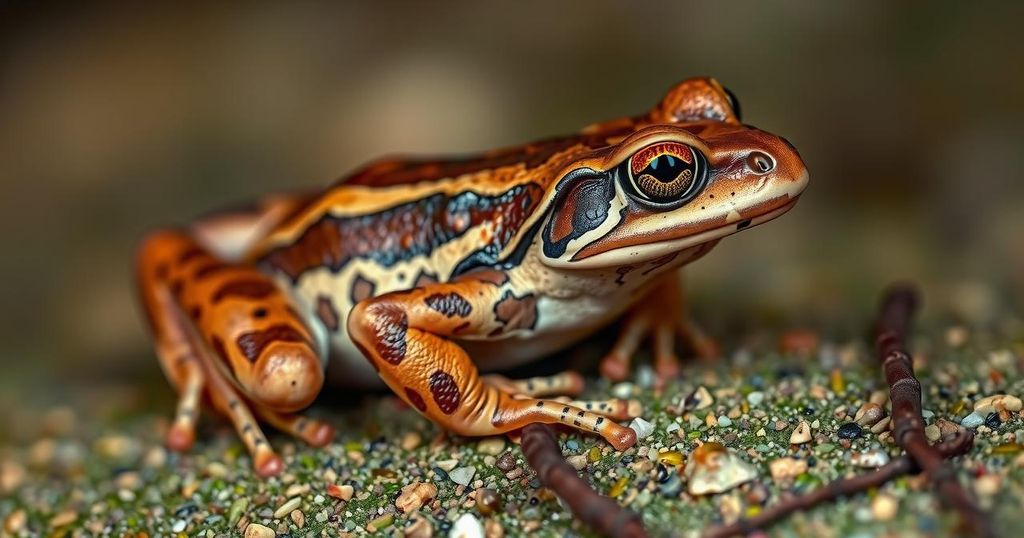The Helmeted Water Toad, a large amphibian species residing in Chile, is facing severe risks due to climate change and human activities that threaten its habitat. This species, considered a “living fossil,” has experienced a population decline of at least 30 percent since 1990, earning it a “vulnerable” status on the IUCN Red List. Conservation efforts are urgently needed to address pollution and habitat loss affecting this remarkable creature.
The Helmeted Water Toad, a large amphibian species that has existed alongside the dinosaurs, is now facing significant threats in its native habitat of Chile. This remarkable frog, which can grow over 30 centimeters in length and weigh up to a kilogram, is classified as a “living fossil” due to its minimal genetic change over millions of years. However, the impact of climate change and human activities is endangering its survival, leading to a worrying decline in its population.
Scientists estimate that the population of the Helmeted Water Toad has diminished by at least 30 percent since 1990. Melissa Cancino, an animal doctor and founder of Proyecto Anfibia, highlighted the poignancy of the situation, stating, “It is sad that a species that managed to coexist with dinosaurs, that managed to resist a mass extinction, is now threatened by human beings.” This amphibian is currently listed as “vulnerable” on the International Union for Conservation of Nature’s (IUCN) Red List.
Multiple factors contribute to the decline of the Helmeted Water Toad, including climate change, habitat destruction, environmental degradation, and pollution. Poor management of water resources and waste exacerbates these challenges, severely impacting the frog’s living environment. Matias Faundez, a member of Proyecto Anfibia, expressed his concerns based on observations in Valparaiso, noting, “This estuary runs through the whole city, and has plenty of illegal run-offs. Even so, the frog manages to survive.”
The Helmeted Water Toad (Calyptocephalella gayi) is an amphibian endemic to Chile, known for its size and historical significance as a survivor of evolutionary changes since the time of the dinosaurs. Living fossils are species that exhibit remarkably few changes over extensive geological timescales. Unfortunately, climate change and anthropogenic factors are threatening this unique species, placing it at risk of extinction and drastically reducing its population. Its habitat covers a significant portion of Chile, where various environmental challenges persist, necessitating urgent conservation efforts.
In summary, the Helmeted Water Toad, a centuries-old species, is facing unprecedented threats from climate change and human activities that endanger its survival. The decline of its population by over 30 percent since 1990 is alarming. Protection efforts led by groups like Proyecto Anfibia are critical to mitigating factors such as pollution and habitat loss that jeopardize this distinctive amphibian’s future.
Original Source: learningenglish.voanews.com






